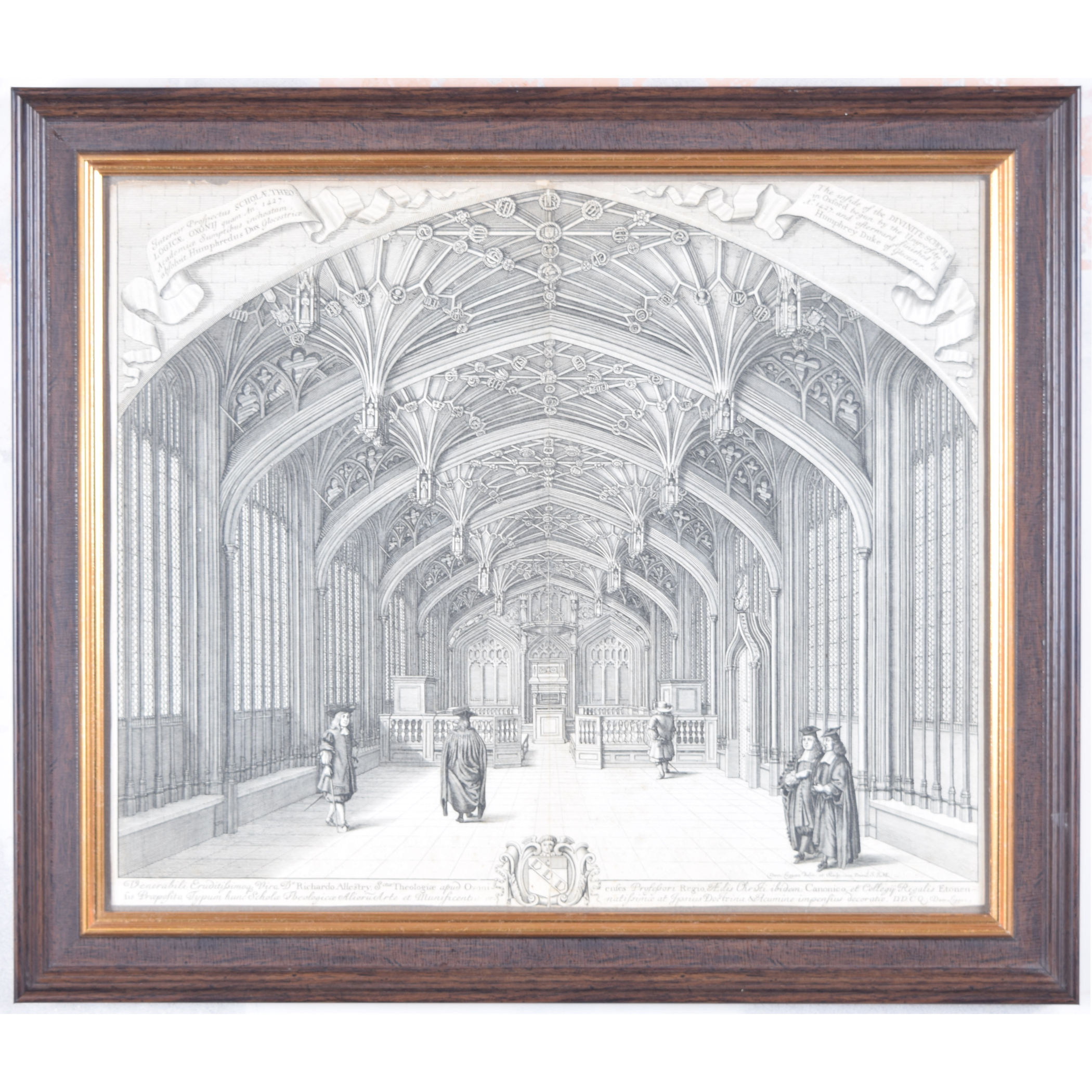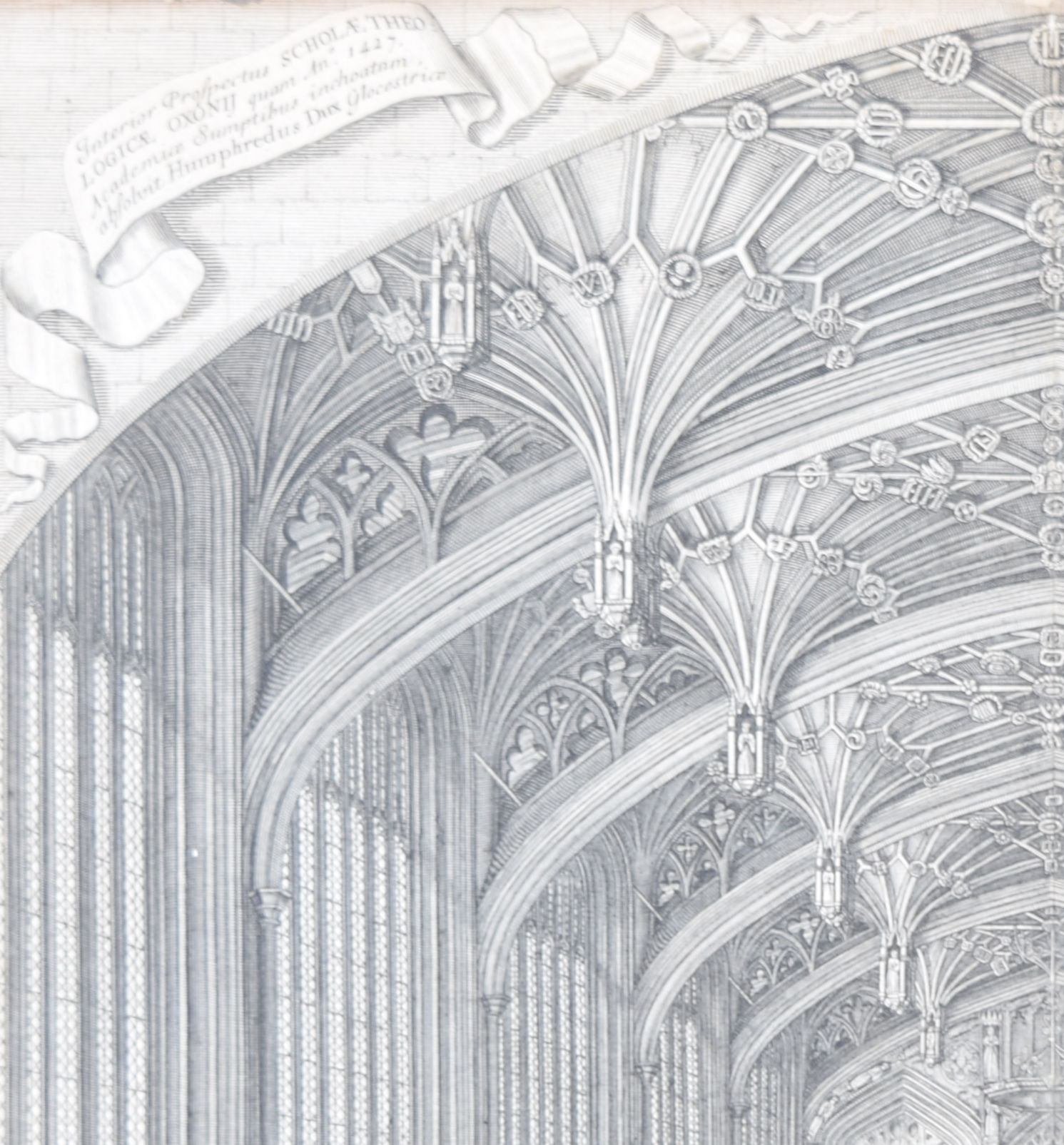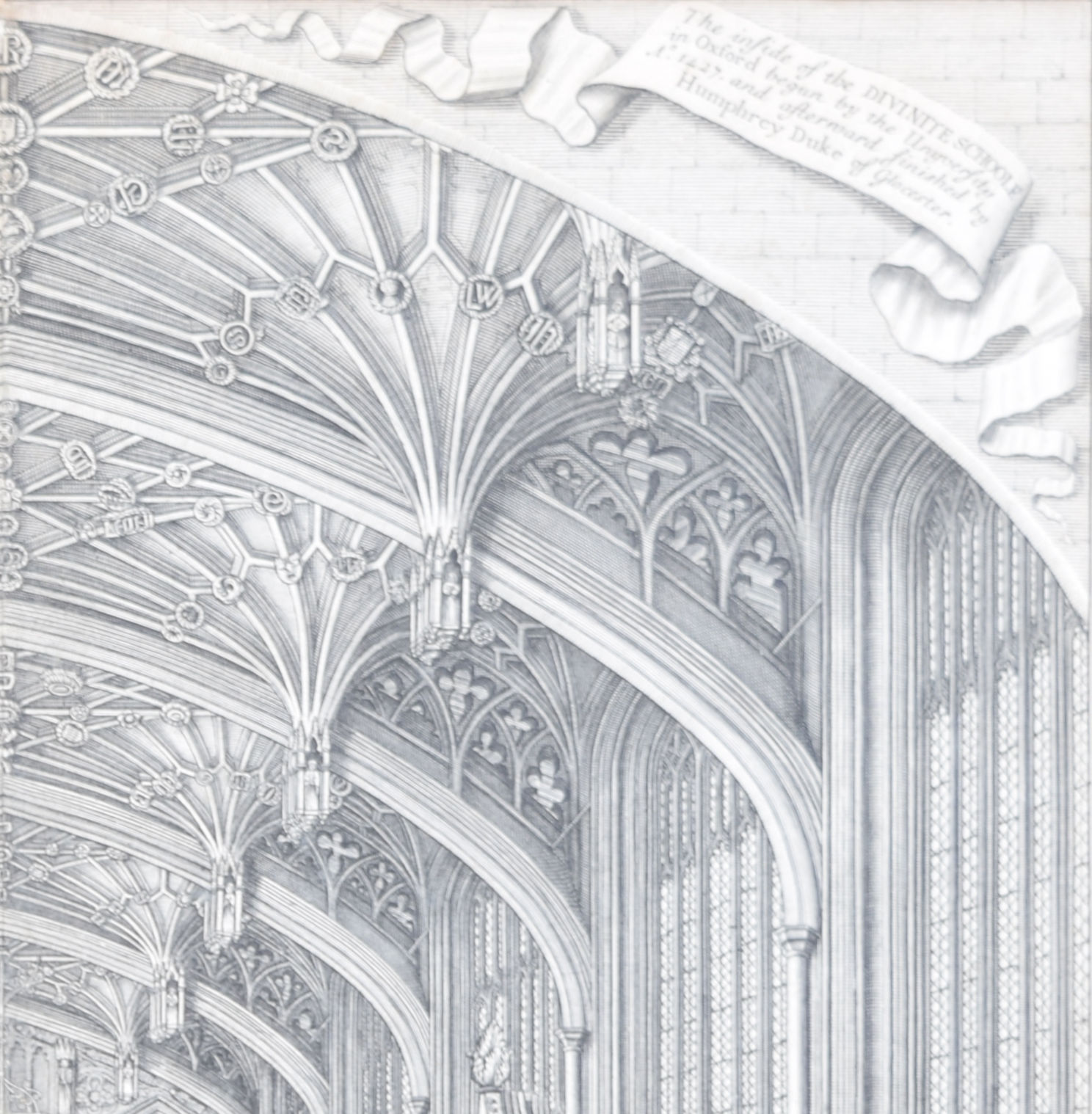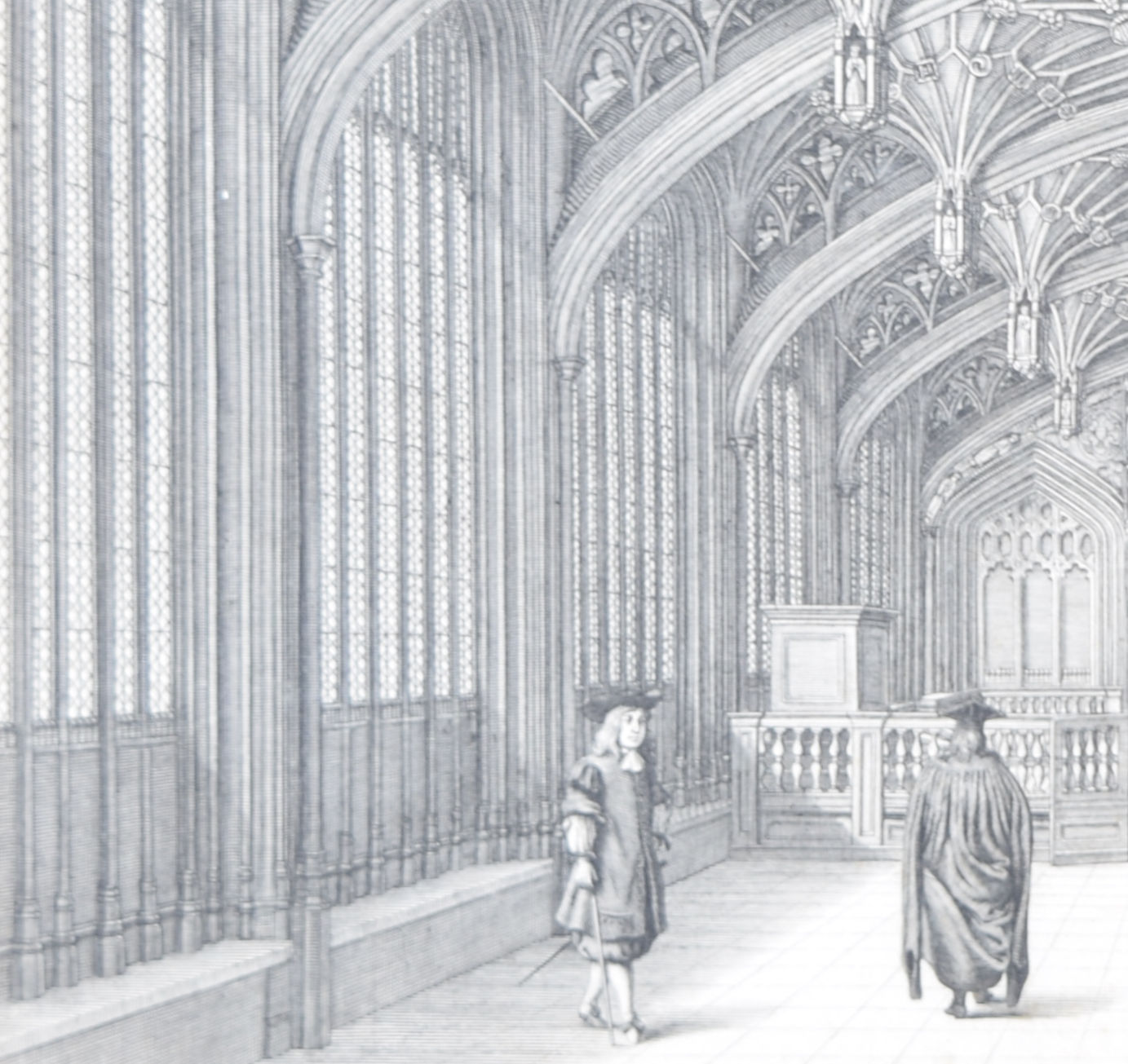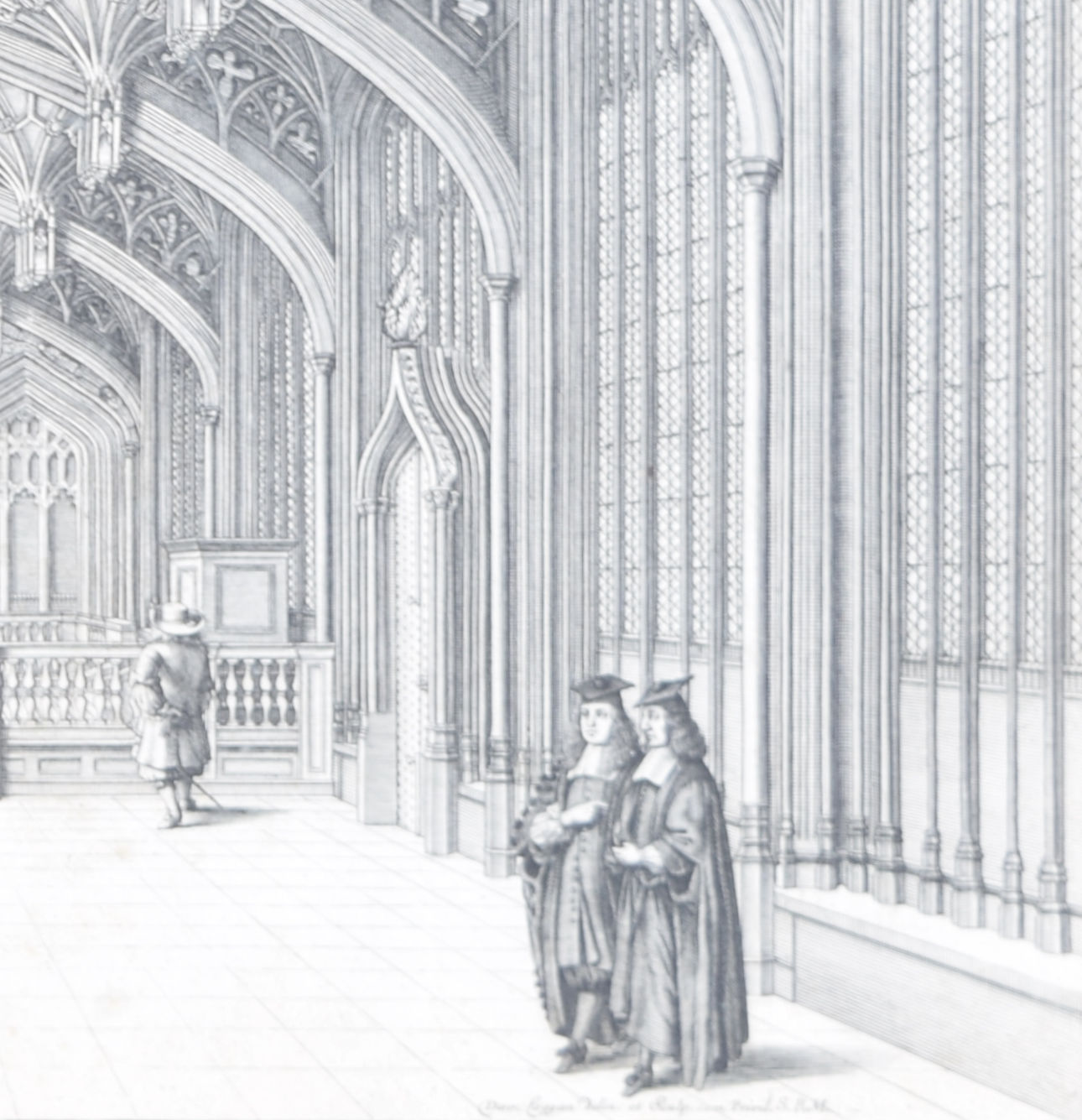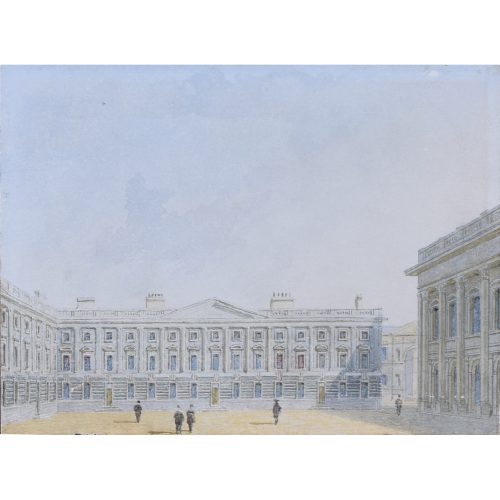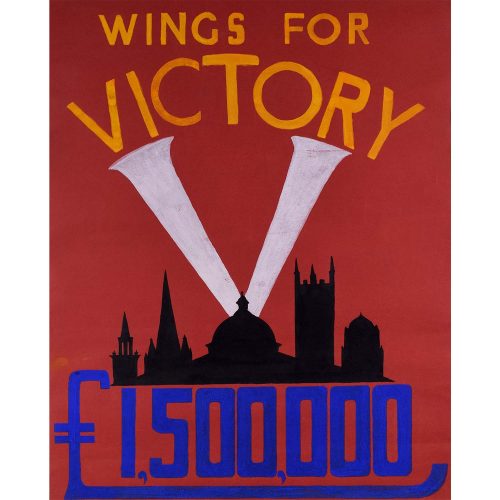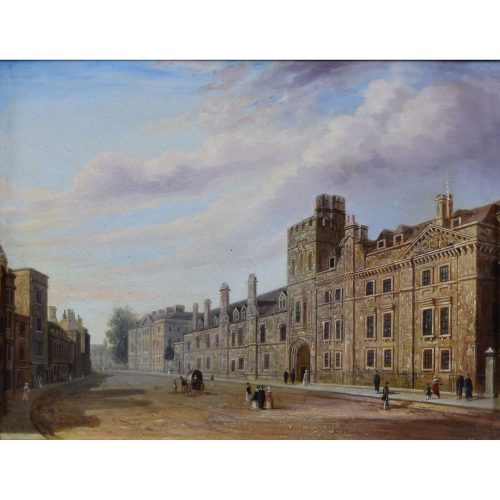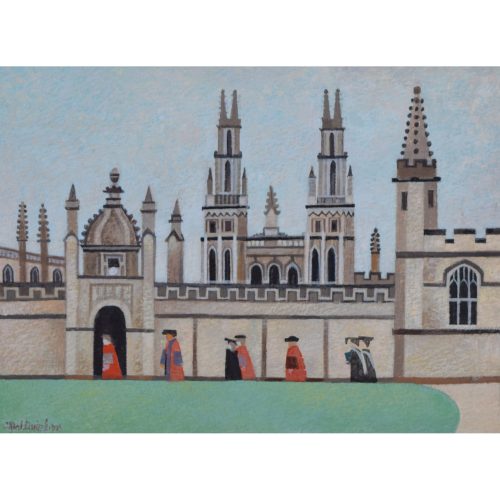David Loggan (1634 – 1692)
The Divinity School, Oxford (1675)
Engraving
33 x 41 cm
David Loggan’s view of Oxford’s medieval Divinity School, which was once the beating heart of theological studies at the University. Of particular interest here is the trompe l’oeil scroll of torn paper which frames the view.
Loggan was born to English and Scottish parents, and was baptised in Danzig in 1634. After studying engraving in Danzig with Willem Hondius (1598-1652 or 1658), he moved to London in the late 1650s, going on to produce the engraved title-page for the folio 1662 Book of Common Prayer. He married in 1663 and moved to Nuffield in Oxfordshire in 1665. Loggan was appointed Public Sculptor to the nearby University of Oxford in the late 1660s, having been commissioned to produce bird’s-eye views of all the Oxford colleges. He lived in Holywell Street as he did this. The ‘Oxonia Illustrata’ was published in 1675, with the help of Robert White (1645-1704). Following its completion, Loggan began work on his equivalent work for Cambridge; the ‘Cantabrigia Illustrata’ was finally published in 1690, when he was made engraver to Cambridge University.
The ‘Oxonia Illustrata’ also includes an engraving of Winchester College (Winchester and New College share William of Wykeham as their founder) whilst the ‘Cantabrigia Illustrata’ includes one of Eton College (which shares its founder, Henry VIII, with King’s College).
Bird’s-eye views from this era required a particular talent as an architectural perspectivist; it was not until 1783 that it became possible for artists to ascend via hot air balloons and view the scenes they were depicting from above. Loggan thus had to rely on his imagination in conceiving the views.
Loggan’s views constitute the first accurate depictions of the two Universities, in many ways unchanged today. Whilst the Oxford engravings were produced in reasonable numbers and ran to a second edition by Henry Overton (on thicker paper and with a plate number in Roman numerals in the bottom right-hand corner), those of Cambridge were printed in much smaller numbers.
The Dutchman Pieter van der Aa published some miniature versions of the engravings for James Beverell’s guidebook to the UK, ‘Les Delices de la Grande Bretagne’ (circa 1708). The contemporary artist Andrew Ingamells (born 1956) has produced a highly-acclaimed series of etchings which bring Loggan’s original vision up to date.
Condition: trimmed within platemark and mounted to board, otherwise in very good condition.
If you are interested, please email info@manningfineart.co.uk or call us on 07929 749056.

